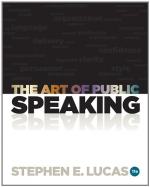—THEODORE PARKER.
Narration of Events in General
In this wider, emancipated narration we find much mingling of other forms of discourse, greatly to the advantage of the speech, for this truth cannot be too strongly emphasized: The efficient speaker cuts loose from form for the sake of a big, free effect. The present analyses are for no other purpose than to acquaint you with form—do not allow any such models to hang as a weight about your neck.
The following pure narration of events, from George William Curtis’s “Paul Revere’s Ride,” varies the biographical recital in other parts of his famous oration:
That evening, at ten o’clock, eight hundred British troops, under Lieutenant-Colonel Smith, took boat at the foot of the Common and crossed to the Cambridge shore. Gage thought his secret had been kept, but Lord Percy, who had heard the people say on the Common that the troops would miss their aim, undeceived him. Gage instantly ordered that no one should leave the town. But as the troops crossed the river, Ebenezer Dorr, with a message to Hancock and Adams, was riding over the Neck to Roxbury, and Paul Revere was rowing over the river to Charlestown, having agreed with his friend, Robert Newman, to show lanterns from the belfry of the Old North Church—“One if by land, and two if by sea”—as a signal of the march of the British.
The following, from the same oration, beautifully mingles description with narration:
It was a brilliant night. The winter had been unusually mild, and the spring very forward. The hills were already green. The early grain waved in the fields, and the air was sweet with the blossoming orchards. Already the robins whistled, the bluebirds sang, and the benediction of peace rested upon the landscape. Under the cloudless moon the soldiers silently marched, and Paul Revere swiftly rode, galloping through Medford and West Cambridge, rousing every house as he went spurring for Lexington and Hancock and Adams, and evading the British patrols who had been sent out to stop the news.
In the succeeding extract from another of Mr. Curtis’s addresses, we have a free use of allegory as illustration:
THE LEADERSHIP OF EDUCATED MEN




